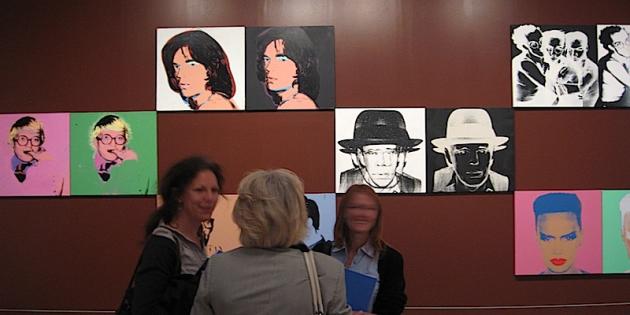In October, the buzz around the Frieze Art Fair was amplified by some spectacular transactions. The record-breaking sale of Gerhard Richter’s ‘Abstraktes Bild’ caught the headlines with its mix of money and celebrity: Eric Clapton sold the piece for £21.3m, the highest amount ever paid for a work by a living artist.
Beneath this cataract of conspicuous wealth, however, a couple of dissenting voices can be heard. In the past week, sociologist Sarah Thornton and veteran art critic Dave Hickey have each articulated cutting critiques of the excesses of the art market, and its pernicious influence on the contemporary art scene.
10 reasons NOT to write about the art market
Sarah Thornton is a writer and arts journalist best known for her 2008 ethnography ‘Seven Days in the Art World’, which drifted wryly through studios, colleges, Art Fairs and auction houses. For an article in the Fall edition of TAR magazine, however, she took a far harsher approach to the most extravagant pockets of the art world. The article declared her decision to abandon reporting on the art market, explaining her stance with a manifesto-style list of “10 reasons NOT to write about the art market.”
Some of her points are jokily superficial: she complains about poor pay, formulaic stories, and cretinously cheerful press releases. But others concisely capture more serious and fundamental problems.
Her first reason is that writing about the art market “gives too much exposure to artists who attain high prices.” This then connects to her fifth point, a socially-rooted criticism: “amongst the biggest spenders in the art market right now are people who have made their money in non-democracies with horrific human rights records. Their expertise in rising to the top of a corrupt system gives punch to the term “filthy lucre.””
By implication, it is individuals such as these – more concerned with making money by any means possible than with “the search for meaning in life” (Seven Days in the Art World) – that have a depressingly powerful influence over which artists and artworks attain cultural prominence. Considering the litigious sensitivity of the art market’s wealthiest players, a great deal of criticism has to be by implication. Thornton’s article deftly handles this necessary vagueness. She attacks the “tightknit cabal of dealers and speculative collectors” who manipulate art journalists into “publicising the artists whose prices they spike at auctions.”
Most frankly of all, Thornton admits that “the most interesting stories are libellous.” She makes in general terms the kind of accusations that no one dares put forward with any specificity: “Fraud and price-fixing aside, everyone involved in the art market knows that tax evasion is a regular occurrence and money laundering is a driving force in certain territories.”
“It’s nasty and it’s stupid. I quit” – Thornton’s arguments are mirrored in comments made by the iconoclastic American art critic Dave Hickey , reported in Sunday’s (28 October) Observer. Hickey, now in his 70s, told the newspaper he had decided to stop writing about the art world altogether.
His explanation was phrased with characteristic verve: “Art editors and critics – people like me – have become a courtier class. All we do is wander around the palace and advise very rich people. It’s not worth my time.” He told The Observer that he didn’t realise art was a bourgeois pursuit when he was first entranced by it in the 1960s. Now, though, he is sickened by the soulless approach of many of the people whose money drives the interests of the art world.
“It used to be that if you stood in front a painting you didn’t understand, you’d have some obligation to guess,” he said. “Now you don’t. If you stood in front of a Bridget Riley you would have to look at it and it would start to do interesting things. Now you wouldn’t look at it. You ask a consultant.” “What can I tell you?” he concluded. “It’s nasty and it’s stupid. I’m an intellectual and I don’t care if I’m not invited to the party. I quit.”
Words: Toby Hill/ Photo “PopLife’ © ArtLyst 2012

